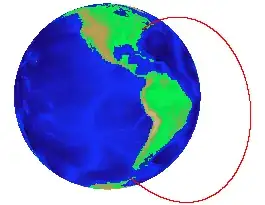I recently went to Antarctica where we made many shore excursions with Zodiacs. On one of them we visited the Ukrainian Vernadsky Research base on Galindez Island where they conduct geophysics research.
I was discussing this with one of the scientists there who was trying to describe his work. His English was not great and he was probably talking down to me as a non-specialist, but he very clearly indicated that he was studying the way charged particles from the sun cause perturbations along geomagnetic lines of force over great distances. And on a piece of paper he drew one such line that he was studying which he showed as descending to earth in New England (where I live) and said they were doing this research with Boston College.
My Question: I always thought that the idea of a "line" of magnetic force was conceptual convenience, an artifice we used to be able to talk about magnetism but that there are no actual, physical discreet "lines". And that the visual lines that form with, say, iron filings, are just due to the magnetized filings attracting others around them and so are just clumping artifacts of the filings themselves.
But this scientist seemed to be specifying a very specific line including a specific location near Boston where it descends to earth and drew it that way on a piece of paper and said they had been studying this particular line for years during different cycles of solar activity. What could he have been referring to?
